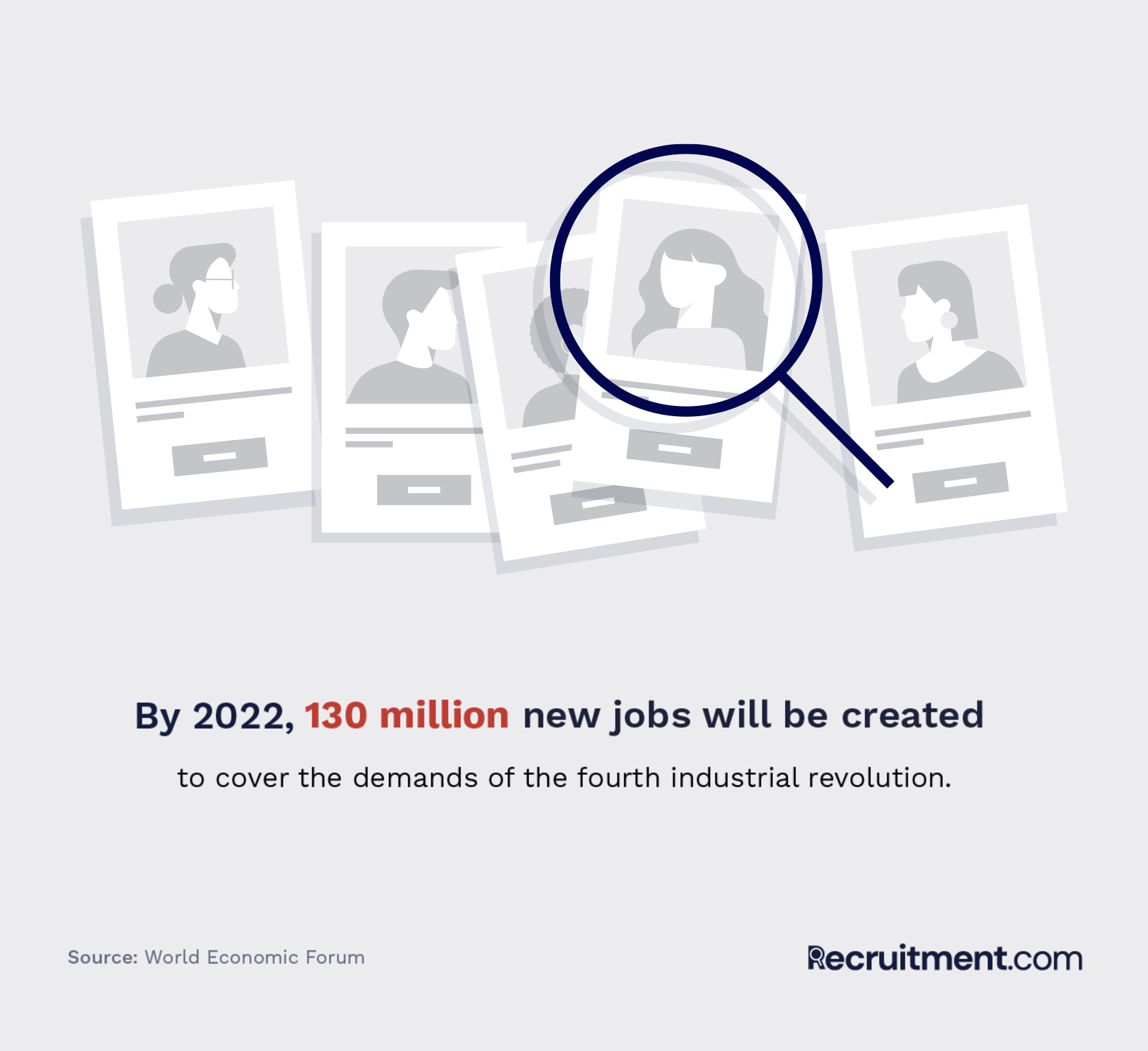Why You Should Upskill Your Workforce

Diane Faulkner is an award-winning writer on labor law, corporate culture, and HR technology in many business journals, including Forbes.
Recruiting is no longer just about finding people with specific hard skills; now it is also about finding people with the right interpersonal skills because today’s workforces are predominantly remote. People need to communicate and lead better than they did in the on-site workdays for everyone to stay productive.
This is very much on the mind of the C-suite. According to a PwC report, Talent Trends 2019: Upskilling for a Digital World, a whopping 79 percent of global CEOs say they are extremely or somewhat concerned about the availability of people with the right capabilities.
Upskilling your existing workforce can help ease those concerns. Although it can be tough to implement an effective program—due to time and budget constraints, as well as fear that upskilled workers will leave the company—the benefits are plentiful.
What Is Upskilling?
Upskilling is deepening and advancing a worker’s core competencies. As Joe Mullings, chairman and CEO of medtech talent acquisition company the Mullings Group, explains, “Upskilling focuses on training employees who are going to stay in their current position or career path.” The COVID-induced shift to remote work has made soft skills key core competencies. But these need honing for workers to be successful in their roles.
Reskilling, on the other hand, is teaching someone skill sets they lack entirely—“training employees for a completely new occupation,” says Mullings. Nearly everybody has some soft skills; they just could use fine-tuning, or upskilling.
Why Upskilling Matters Now
With many jobs becoming automated, lower-skilled workers need reskilling so that they can remain employed, albeit in different roles than they had. But the need for human ingenuity and innovation is rising, according to Alan Hosking, publisher of HR Future Magazine. This is where upskilling workers with soft skills comes in. “In the pre-COVID-19 command-and-control world, leaders paid relationships lip service, but in a more caring, codependent, and collaborative workplace, creativity and relationships will play much bigger roles,” he says in a 2020 CareerAddict study. For teams to work together successfully going forward, they need help enhancing soft skills, such as communication.
Plus, the World Economic Forum estimates that by 2022, more than 130 million jobs will be created to cover the demands of the fourth industrial revolution. Yes, those positions will require sharp technical skills, but they will also need workers who can show empathy and solve problems.

How Upskilling Will Change Recruiting
An organization can have the best intentions for upskilling their workforce, but if a worker is not open to being upskilled, the company will have wasted money and time trying. For this reason, recruiters need to source candidates with strong cognitive ability, organizational skills, conscientiousness, and AQ (adversity quotient), “meaning they get excited to be engaged in an agile learning environment,” says Mullings.
“It is going to end up changing target profiles of individuals,” he says. Instead of looking simply for skills and a culture fit, HR is going to have to consider whether individuals can be upskilled—and whether they want to be.
Competencies That Need Upskilling
A 2020 study by TalentLMS, Training Journal, and Workable reveals that managers believe the most important soft skills that employees lack are:
- Communication/collaboration (57 percent)
- Leadership (54 percent)
- Proactive thinking (50 percent)
- Agility/adaptability/ability to pivot (45 percent)
- Resilience (27 percent)
- Persuasion/negotiation (25 percent)
- Empathy (23 percent)
Who Needs to Be Upskilled?
The TalentLMS study showed at least half of managers believe their teams lack critical soft skills necessary for today’s workplace. But non-managerial employees are not the only ones who would benefit from upskilling.
That same study reveals that “74 percent of employees think their managers need reskilling and upskilling training.” Teams are becoming more diverse and increasingly remote. These factors make superior communication, leadership, and emotional intelligence paramount for supervisors.
Workers, such as salespeople, who relied on in-person interactions to succeed in the past also need upskilling. For example, sales reps who might have been charismatic and convincing over dinner can no longer make pitches that way because of COVID-19. Rather, business must be done by tele- or videoconferencing. “That requires an agility mindset that some who are not as adept in a digital environment are going to have a challenge with,” Mullings says.
The Benefits of Upskilling
Getting an upskilling program off the ground takes significant effort and spend. Is it worth it?
Denise Graziano thinks so. The author, speaker, and CEO of Graziano Associates, a marketing communications firm that helps companies attract and retain talent, says upskilling strengthens a whole organization. “It shows you are investing in the people who are going to deliver for the company...That fuels greater commitment to the organization.”
What’s more: Ninety-one percent of respondents in the TalentLMS study found upskilling increases productivity, 84 percent of CEOs saw an increase in goal attainment, and 69 percent of CEOs saw employee retention rise, all of which boost the bottom line. Seventy-four percent of CEOs reported a better company reputation, too, which bolsters recruitment efforts.
According to PwC’s Talent Trends 2020 report, CEOs of companies with more advanced upskilling programs reported “stronger corporate culture and employee engagement (60 percent), greater innovation and accelerated digital transformation (51 percent), improved talent acquisition and retention (45 percent), higher workforce productivity (43 percent), greater business growth (37 percent), and [reduced] skills gaps and mismatches (35 percent).”
What Holds Companies Back From Upskilling?
Despite these encouraging statistics, only 35 percent of employers have an official upskilling/reskilling program in place, according to the TalentLMS study. One of the biggest reasons for that small number? Fear, says Graziano.
“People in leadership think if we give these people the training, then they are going to go and take it to another job.” The PwC Talent Trends 2020 report backs that up, with 30 percent of CEOs reporting retention of upskilled employees as their top challenge with upskilling efforts.

But “if you want people to trust an organization, you have to trust them back,” says Graziano, “and that means investing in their career. [People] want to know they have a place to advance. That is what upskilling shows. Investing in them gives them that much more reason to stay.”
How to Upskill Your Team
Upskilling programs call for ample budgets and paid time off for workers to train, says Mullings. Beyond that, there are myriad methods to upskill your workforce. These three are most common.
1. Micro-training. With decreased attention spans and increased workloads, companies can produce or purchase short video modules, 3 to 6 minutes long each, for employees to watch over a long period of time, say, a program of 20 modules over the course of five weeks.
2. Upskill courses. These are also online asynchronous training modules, but they are not necessarily as short as micro-training clips. They too offer an economical way to train employees across different time zones.
3. Job rotation. Employees experience new roles, learn new skills, and more fully understand the context of their roles and duties. Once they know what the “other side” needs, they can tailor their communication and behaviors to work more effectively together.
Upskilling Is Never Finished
“Learning in college is becoming less and less applicable...because the rate of [technological] acceleration will usually outpace what you can learn in four years,” says Mullings. “Therefore, upskilling is hypercritical.”
To compete and win, companies must identify and prioritize skills and gaps, tie them to their mission and culture, and then invest in upskilling their workforces. Measure the results by comparing retention rates, business growth, and more, then identify and prioritize new skills and gaps—and on, and on.

Diane Faulkner is an award-winning writer on labor law, corporate culture, and HR technology in many business journals, including Forbes.






